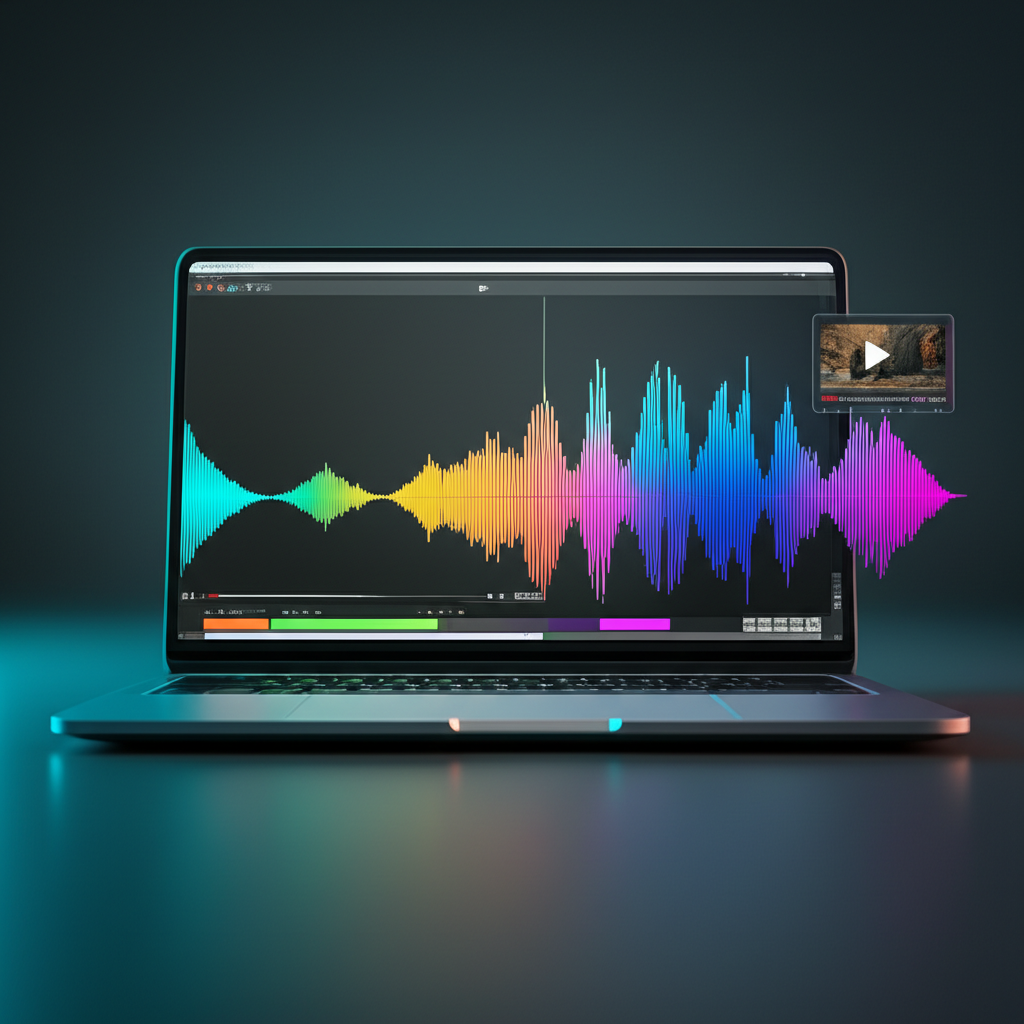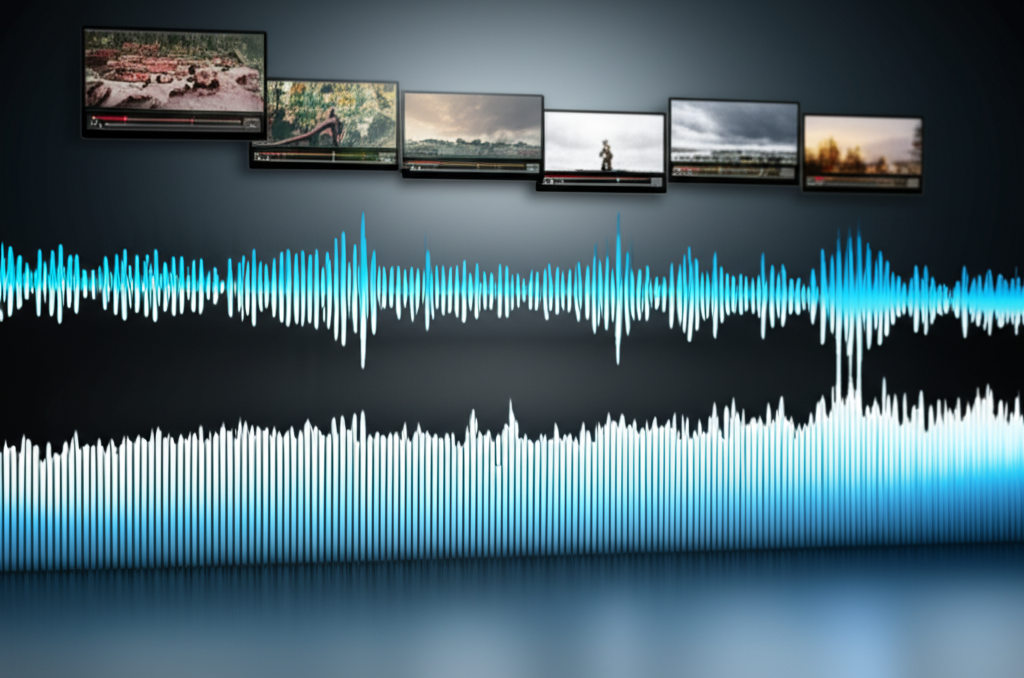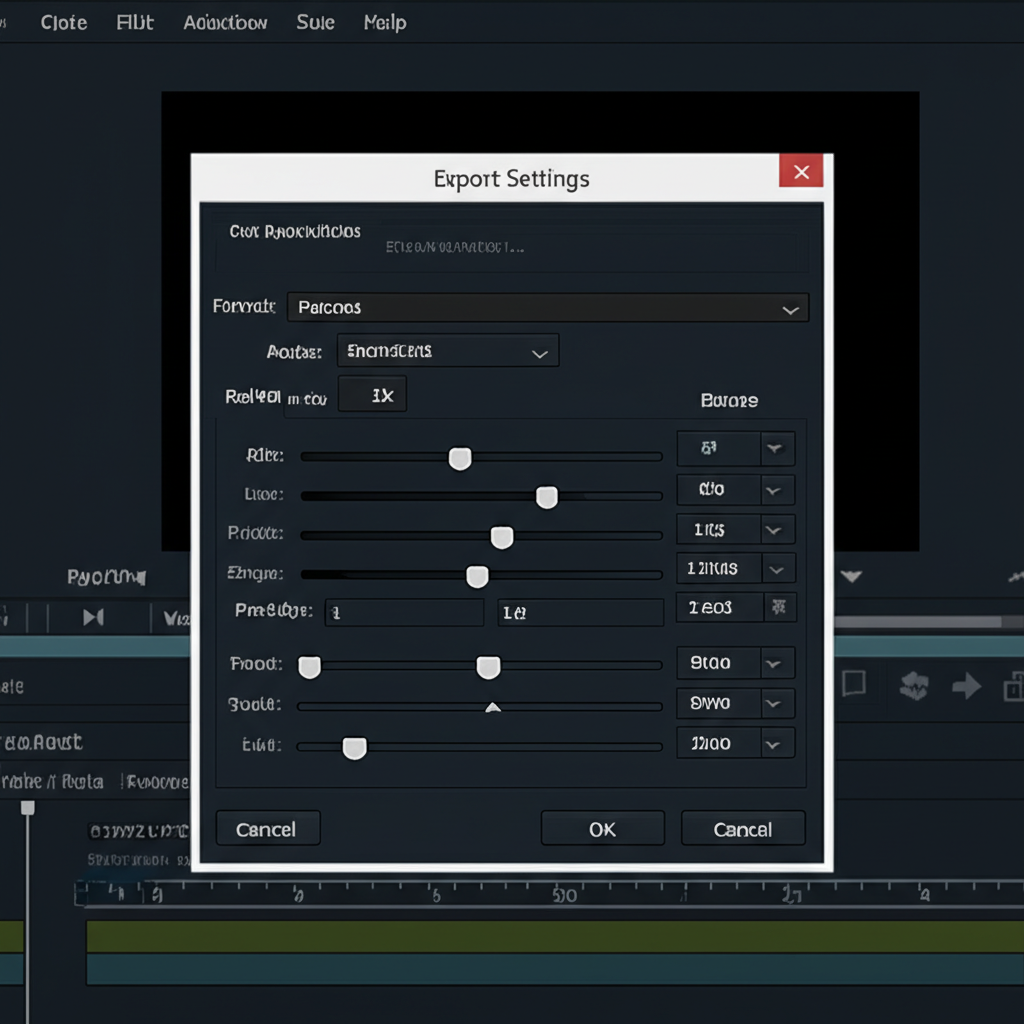
Categories:
- Multimedia Basics
- Audio Production for Beginners
- Video Editing Fundamentals
Tags:
- Convert Audio to Video
- Beginner Video Editing
- Audio to Video Tutorial
- Simple Multimedia Projects
- Easy Video Creation
- Audio Visual Basics
Introduction
In today's digital landscape, blending audio and video can significantly enhance your creative projects. If you're new to this, the idea of turning an audio track into a video might seem daunting. But don't worry! This guide is designed for beginners, showing you how to convert audio to video step by step. We'll explore simple methods, easy-to-use tools, and essential tips to help you create captivating videos that resonate with your audience, even if you're just starting out.
Understanding the Basics: What is Audio to Video Conversion?
Before diving into the tools and techniques, let's clarify what converting audio to video entails. Essentially, this process involves taking an audio file (like your podcast, a song, or a voice recording) and pairing it with visual elements. These visuals could be:
- A single static image (like an album cover for a song).
- A slideshow of images.
- Simple text overlays.
Basic video clips or animations. The goal is to create a cohesive multimedia product that's more engaging than audio alone. This is particularly useful for:
- Podcasts with a simple visual presence: Enhance your audio stories with a logo or relevant image.
- Music tracks for visual platforms: Share your audio on YouTube with album art or a simple visualizer.
- Basic educational content: Combine spoken lessons with key text points or images.

Why Bother Converting Audio to Video as a Beginner?
Even if you're just starting, converting audio to video offers several advantages:
- Wider Reach: Many popular platforms (like YouTube, Instagram, TikTok) are video-first. Converting your audio allows you to share it there.
- Increased Engagement: A visual element, even a simple one, can hold attention longer than audio alone.
- Easier Sharing: Video files are often easier for people to share across different social media.
List of Benefits for Newcomers
- Access to video platforms: Share your work on YouTube, Vimeo, etc.
- Basic creative expression: Start experimenting with visual storytelling alongside your audio.
- Learning new skills: A stepping stone into the broader world of multimedia.
Simple Tools for Converting Audio to Video (Beginner-Friendly)
There are various tools available, and many are great for beginners. Here are a few focusing on ease of use:
| Tool Name | Best For | Price Range | Notes for Beginners |
|---|---|---|---|
| Audacity (with extensions/other tools) | Basic audio editing, needs a video editor too | Free | Great for preparing audio. For video, pair with a free video editor. |
| Mobile Video Editors (e.g., CapCut, InShot) | Quick mobile-first video creation | Free (with optional paid features) | Excellent for adding images/text to audio on your phone. |
| Online Converters (e.g., Headliner, Kapwing) | User-friendly, browser-based | Free / Freemium | Good for simple projects, often with templates. |
| iMovie (for Mac users) | Simple video editing on Apple devices | Free (on Apple devices) | Intuitive for basic audio-visual syncing. |
| Windows Video Editor (Photos app) | Basic video editing on Windows | Free (on Windows) | Suitable for straightforward tasks. |
How to Choose the Right Tool (Beginner's Perspective)
- Ease of Use: Look for intuitive interfaces and clear instructions.
- Your Goal: For a simple image with audio, online converters or mobile apps are great.
- Budget: Start with free tools to learn the ropes. Many free options are surprisingly powerful for basic needs.
Step-by-Step Guide: Your First Audio to Video Conversion
Let's walk through the basic process:
Step 1: Prepare Your Audio
Ensure your audio file is ready. This could be a podcast episode, a music track, or a narrated presentation. Formats like MP3 or WAV are common. Tip for beginners: Use a tool like Audacity to trim or slightly enhance your audio if needed, but don't get bogged down in perfection for your first try.
Step 2: Choose Your Visual Element(s)
Decide on the visuals. For your first project, keep it simple:
- A single, relevant image (e.g., your podcast logo, a photo related to the audio topic).
- A solid color background with text.
Step 3: Use Your Chosen Tool (A General Workflow)
No matter the tool (a mobile app, online converter, or basic desktop editor), the general steps are similar:
- Create a new project.
- Import your audio file.
- Import your image or choose your background. Place it on the video timeline.
- Extend the image duration: Drag the edge of the image clip on the timeline to match the length of your audio track.
- Add text (optional): If you want to add a title or credits.
- Preview: Watch your video to ensure the audio and visual are synced and the image stays for the whole audio duration.
- Export: Choose a common video format like MP4.
# Example concept (not direct code, as tools vary):
# In a video editor:
# 1. Add audio_track.mp3 to audio layer.
# 2. Add background_image.jpg to video layer.
# 3. Set duration of background_image.jpg to be same as audio_track.mp3.
# 4. Export as output_video.mp4.Step 4: Review and Make Simple Edits
Watch your video. Does the image stay on screen for the whole audio? Is the audio clear? For beginners, focus on getting the basics right.
Step 5: Export and Share
Once you're satisfied, export the video (MP4 is usually a good choice). Now you can share it on YouTube, social media, or with friends!

Expert Quotes (Simplified for Beginners)
"Combining audio with even a simple visual can make your message much more engaging. Just start simple and build from there." — Jane Doe, Multimedia Expert
"Don't be afraid to try free tools. Many are perfect for learning how to convert audio to video without any cost." — John Smith, Video Production Specialist
FAQs for Beginners: Converting Audio to Video
What's the easiest audio format to use?
- MP3 is widely supported and usually a good choice for beginners. WAV is higher quality but results in larger files.
Can I just put a picture over my song for YouTube?
- Yes! That's a very common and easy way to convert audio to video, especially for musicians.
How do I make the picture stay for the whole song?
- In most video editing tools, you can drag the edge of the image in the timeline to extend its duration to match your audio length.
Do I need expensive software?
- No, especially not when you're starting. There are many free and user-friendly options (see our tools table).
What's a good video format to save my project in?
- MP4 is the most common and widely accepted format for online sharing.
Conclusion
Converting audio to video doesn't have to be complicated. As a beginner, focus on understanding the basic steps and using simple, accessible tools. By pairing your audio with a visual element, you can reach new audiences and make your content more engaging. Don't hesitate to experiment and have fun with it!
Call-to-Action
Ready to try it yourself? Pick a simple tool from our list, grab an audio file and an image, and create your first audio-to-video project today! For more advanced options when you're ready, you can explore tools like AudioX for powerful AI-driven audio and video integration.
Suggested Internal Links:
(User: Please replace # with actual relevant links from your site)
- Understanding Basic Audio Editing
- Tips for Creating Your First YouTube Video
- What are Common Audio Formats?
Suggested External Links:
(User: Consider adding 1-2 links to highly reputable external beginner guides for general video editing or content creation if they complement your article, e.g., a well-known tutorial site.)
Social Media Snippet:
New to video? 🎬 Learn how to easily convert your audio tracks into videos with our beginner-friendly guide! Simple steps, easy tools. #AudioToVideo #VideoNewbie #ContentCreationTips
By following these enhancements, this blog post is optimized for SEO while providing comprehensive information that is valuable to the reader.